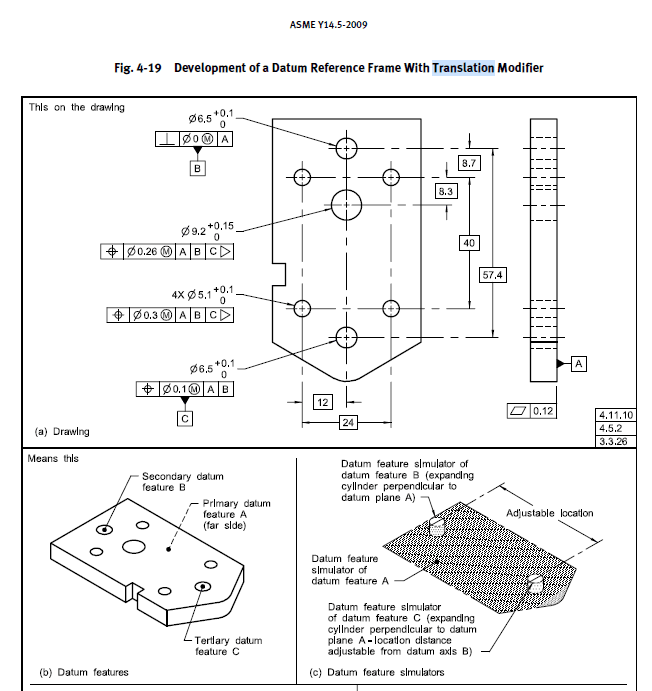In the example the translation modifier is used because there is no useful calculation to do without it.
It's like asking why a knight on a chessboard does not move diagonally.
The ASME Y14.5 committee decided to add the translation modifier for cases when there isn't an MMC modifier that would allow the use of fixed size gage pins for the datums.
In previous versions some ASME Y14.5 committee members claimed that an over-constrained DRF was "obviously" one that demanded the over-constraints must be ignored. With the translation modifier they are explicitly saying the over-contraint should be ignored.
Datum feature A planar surface controls 3 degrees of freedom, the RFS datum feature B pin controls 2 degrees of freedome, and the RFS datum feature C controls 2 degrees of freedom. That is a total of 7 degrees of freedom. The part is a rigid prismatic solid so there are only 6 degrees of freedom available, so the translation modifier throws away one of them for the datum feature C pin.
If that degree of freedom was not thrown out, the pins on the fixture would be a fixed distance apart and the item being inspected would have to be elastically stretched or compressed to get the holes to a matching location, possibly requiring a Finite Element Analysis to determine all the distortions that would result from that.
Almost any calculation would involve a matrix of inequalities to describe even trivial ones.


